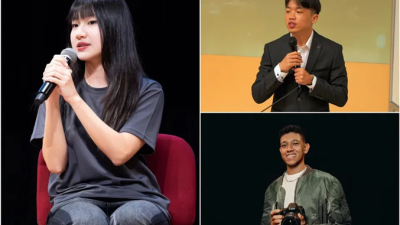The world is aging as obesity is rising!
An important change with regards to the aging process is accumulation of fat mass, also known as obesity.
Worldwide, overweight and obesity have overtaken undernutrition in terms of overall health risks.
Obesity is an emerging public health threat, affecting 800 million people with millions more at risk.
Obesity is a major determinant of non-communicable diseases (NCDs) such as diabetes mellitus, heart diseases, certain types of cancer, gallbladder diseases, respiratory problems and musculoskeletal disorders.
It increases the likelihood of comorbidities and doubles the risk of COVID-19 hospitalization.
In Malaysia, the 2015 National Health and Morbidity Survey (NHMS) reported the prevalence of obesity among older adults was 30.2%.
Obesity among the older adults was significantly higher in females, those from the urban setting and among the Indian ethnic group.
Obesity in late life confers a higher risk for impaired physical function which may contribute to poor quality of life.
Obesity potentiates frailty, a decrease in strength, endurance and physiologic function, which result in an increase in vulnerability to injury and disability.
Obese disabled older adults frequently have muscle weakness, poor mobility and higher fall rates.
Falls in older adults is a major public health issue. In the 2018 NHMS, 14.1% of older adults reported having experienced at least one fall during the last 12 months.
Falls can cause injuries that contribute to disability, mortality and increased health care cost.
Even when falls do not result in physical injury, it may cause older adults to become fearful of falling, with consequent restrictions on daily activities and onset of functional decline.

Since obesity is common among older adults, a combination of exercise and modest calorie restriction appears to be the optimal method of reducing fat mass and preserving muscle mass.
Key points for the management of weight loss among older adults may include lifestyle modifications which are achievable and safe.
Weight loss may be accompanied by a decline in fat mass. Therefore, activities to maintain muscle mass, strength, bone density, balance and functional status strength should be a component of all weight loss plans for older adults.
This is particularly crucial for those who are obese with decreased lean body mass (sarcopenic obesity).
Aerobic training, resistance training and balance activities may result in significant quality-of-life gains and improved functional independence.
More space or greens for safe walking, cycling and recreation should also be made available in our neighborhood.
In conjunction with World Obesity Day on March 4, we should increase awareness that obesity is a disease, to help people particularly the older adults achieve and maintain a healthy weight while maintaining their physical functions.
With this year theme “Everybody Needs to Act”, together we can make a difference for everyone.
(Shaznida binti Ghulam, DrPH candidate, and Professor Dr Moy Foong Ming, Department of Social and Preventive Medicine, Faculty of Medicine, Universiti Malaya.)
ADVERTISEMENT
ADVERTISEMENT








































